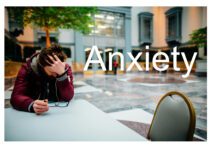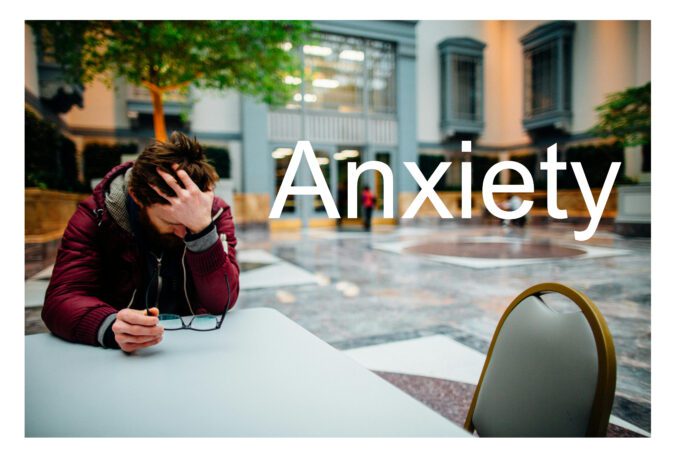Anxiety is a common but often misunderstood emotional state. While everyone experiences occasional worry or nervousness, anxiety disorders affect millions worldwide, impacting their quality of life and mental well-being. This article delves into the complexities of panic and explores the symptoms, possible causes, and effective coping strategies to help manage it.
What is Anxiety?
Anxiety is a natural response to stress, characterized by feelings of worry, fear, and unease. It’s a part of the human body’s “fight-or-flight” response, helping us stay alert to danger. Occasional anxiety is expected, especially before important events or in potentially risky situations. However, when anxiety becomes overwhelming, persistent, or interferes with daily life, it may be indicative of a panic disorder.
Anxiety disorders come in various forms, including:
- Generalized Anxiety Disorder (GAD): characterized by excessive worry about everyday situations.
- Social anxiety disorder: involves intense fear of social situations and interactions.
- Panic Disorder: marked by recurring panic attacks, intense episodes of fear, and physical symptoms.
- Phobias: irrational fear of specific objects, situations, or activities.
- Obsessive-Compulsive Disorder (OCD): A disorder where individuals experience unwanted, repeated thoughts and feel compelled to engage in certain behaviors.
- Post-Traumatic Stress Disorder (PTSD): Occurs after a traumatic event with symptoms like flashbacks, nightmares, and severe anxiety.
Each type of anxiety disorder has its own symptoms and coping mechanisms, but they all share common threads of excessive fear or worry.
Recognizing the Symptoms of Anxiety
Anxiety symptoms vary widely from one person to another, but they generally fall into three categories: physical, emotional, and behavioral.
1. Physical Symptoms
- Rapid heartbeat or palpitations
- Shortness of breath
- Sweating or chills
- Muscle tension and headaches
- Fatigue or difficulty sleeping
- Gastrointestinal issues (e.g., nausea, diarrhea)
2. Emotional Symptoms
- Constant worry or dread
- Feelings of irritability or agitation
- Difficulty concentrating
- Overwhelming fear of specific situations
3. Behavioral Symptoms
- Avoiding certain situations or places
- Engaging in rituals or repeated actions (often seen in OCD)
- Changes in eating or sleeping habits
If these symptoms persist for weeks or months and significantly disrupt daily life, they may point toward an anxiety disorder that needs professional attention.
Everything You Need to Know About Anxiety.
What Causes Anxiety?

The causes of anxiety are complex and often a combination of genetic, environmental, psychological, and physiological factors. Here’s a breakdown of some potential triggers:
1. Genetic Factors
- Research shows that anxiety disorders can run in families, indicating a genetic component. Individuals with a family history of anxiety or mental health disorders are more likely to develop anxiety themselves.
2. Brain Chemistry and Structure
- Imbalances in neurotransmitters like serotonin, dopamine, and GABA (gamma-aminobutyric acid) can contribute to anxiety. Additionally, areas in the brain associated with fear, such as the amygdala, may be overactive in people with dread disorders.
3. Environmental Stressors
- Stressful or traumatic life events—such as abuse, divorce, or the death of a loved one—can increase the likelihood of developing dread. Chronic stress from work, finances, or relationships can also be significant contributors.
4. Personality Factors
- People with certain personality traits, like perfectionism, high sensitivity, or low self-esteem, are more susceptible to dread. Negative thought patterns, like catastrophizing or overgeneralizing, can further exacerbate Dread.
5. Physical Health Conditions
- Medical conditions like heart disease, diabetes, respiratory disorders, and hormonal imbalances can cause anxiety. Chronic illnesses often contribute to ongoing stress, making it difficult to manage Dread symptoms.
Understanding these factors helps in identifying the root causes of anxiety and developing tailored strategies for coping.
Coping Strategies for Managing Anxiety

While Dread can feel overwhelming, numerous strategies and treatments can effectively manage symptoms. These strategies fall into three main categories: lifestyle changes, therapeutic approaches, and medication options.
Lifestyle Changes
- Regular Exercise: Physical activity helps release endorphins, which improve mood and reduce stress. Exercise also improves sleep quality and provides a healthy outlet for anxious energy.
- Balanced Diet: Eating a nutritious, balanced diet supports mental health. Omega-3 fatty acids, antioxidants, and magnesium-rich foods can reduce inflammation and regulate mood.
- Sleep hygiene: Restlessness can disrupt sleep, leading to a vicious cycle. Establishing a consistent sleep routine, avoiding caffeine before bed, and creating a calming pre-sleep environment can promote restful sleep.
- Mindfulness and Relaxation Techniques: Techniques like meditation, deep breathing, and progressive muscle relaxation help manage stress by slowing the mind and calming the body.
- Limiting Stimulants: Reducing caffeine and alcohol intake can help manage restlessness, as these substances can increase heart rate and exacerbate symptoms.
Therapeutic Approaches
- Cognitive Behavioral Therapy (CBT): CBT is one of the most effective therapies for anxiety. It involves identifying negative thought patterns, challenging irrational fears, and developing healthier coping mechanisms.
- Exposure Therapy: Often used for phobias and PTSD, exposure therapy involves gradually facing feared situations or objects to reduce fear over time.
- Acceptance and Commitment Therapy (ACT): ACT encourages individuals to accept their anxious thoughts rather than fighting them. This approach teaches mindfulness and the importance of living in line with personal values.
- Dialectical Behavior Therapy (DBT): DBT is particularly effective for people with severe anxiety and those who struggle with emotional regulation. It focuses on distress tolerance, emotion regulation, and interpersonal effectiveness.
Medication
- Antidepressants: Selective serotonin reuptake inhibitors (SSRIs) and serotonin-norepinephrine reuptake inhibitors (SNRIs) are commonly prescribed for long-term anxiety management.
- Anti-Anxiety Medications: Benzodiazepines are effective for short-term anxiety relief, but they are typically not recommended for long-term use due to the risk of dependency.
- Beta-Blockers: Often used to manage physical symptoms of anxiety, such as rapid heart rate, beta-blockers are particularly useful in situational anxiety (like public speaking).
Medication is often used alongside therapy and lifestyle changes for the best results. Consulting with a healthcare provider ensures that the treatment plan is both safe and effective for the individual.
Building an Anxiety-Resilient Lifestyle
Building a lifestyle that promotes mental well-being is essential in managing stress. While professional help can address severe symptoms, simple daily practices can build resilience.
- Practice Gratitude: Keeping a gratitude journal helps shift focus away from worries and brings awareness to positive experiences, fostering a sense of contentment.
- Limit screen time and news consumption: Constant exposure to distressing news and excessive screen time can heighten distress. Setting limits on social media and news consumption helps maintain a balanced perspective.
- Create a Support Network: Relationships and social support are protective factors against distress. Engaging with supportive friends, family, or support groups can make a significant difference.
- Prioritize Self-Care: Regularly engaging in activities you enjoy helps recharge emotional and mental energy. Hobbies, time in nature, or even a few moments of quiet reflection can serve as effective stress relief.
- Develop a Routine: Establishing a daily routine can provide a sense of structure and control, which is especially beneficial for people with anxiety.
Seeking Help and Knowing When to Reach Out
While many people can manage mild stress through self-care and lifestyle adjustments, there are times when seeking professional help is crucial. If anxiety significantly impacts work, relationships, or overall well-being, it’s essential to consult a healthcare provider. A mental health professional can assess symptoms, determine the type of distress disorder, and create a personalized treatment plan.
Coping with anxiety is a journey, and while it may not always be easy, there are countless resources and support systems available. Mental health is just as important as physical health, and seeking help is a positive and necessary step for those experiencing distress.

















